If you’re new to budget meal planning, then take a deep breath. I’ve got you. Having raised six kids on a blue collar income, I know all too well how important it is to save money at the grocery store and plan budget friendly meals. In the last recession, my husband and I paid off 60k in consumer debt, in part by changing our grocery shopping habits and meal plans. You can save, too, when you meal plan on a budget.
Once you’ve mastered the art of the weekly meal plan, be sure to check out the Good Cheap Eats System. Not only will you lower your food budget, but you’ll learn key strategies to save time on meal prep and grocery shopping. Be sure to download our Budget Grocery List so that all your meals are designed to save you money.
Want to save this post?
Enter your email below and get it sent straight to your inbox. Plus, I’ll send you budget recipes and money-saving tips every week!
Whew. Food prices have gone crazy, haven’t they? Sure, some sale prices are pretty decent, but overall, grocery prices need to take a chill pill.
Thankfully, there are some super easy strategies that you can master so that you plan meals that save you money instead of ones that send you into sticker shock.
When you meal plan on a budget, you free up extra money within your overall budget for bigger and better things, like travel, savings, college, or paying off debt.
Why It’s Important
The thing is: meal planning alone won’t save you money.
Seriously, anyone who says, “all you have to do to save money is meal plan,” well, they’re wrong.
I can meal plan all kinds of tasty things, like filet mignon and lobster tail or even boneless skinless chicken breast when it’s not on sale, and I’ll spend way too much cash.
The trick is to meal plan to save money. That is a different thing altogether!
You can easily stay on budget and avoid food waste through savvy meal planning. It’s as simple as taking stock of what you have, planning meals around what’s there, and supplement with budget ingredients and items you find on sale and clearance.
This is one surefire to meal plan on a budget. You will be eating well AND sitting pretty.
It is also how our family paid off 60K in consumer debt, saved an emergency fund, and funded college and vacations for our family of 8 — and continues to pay cash for everything we buy.
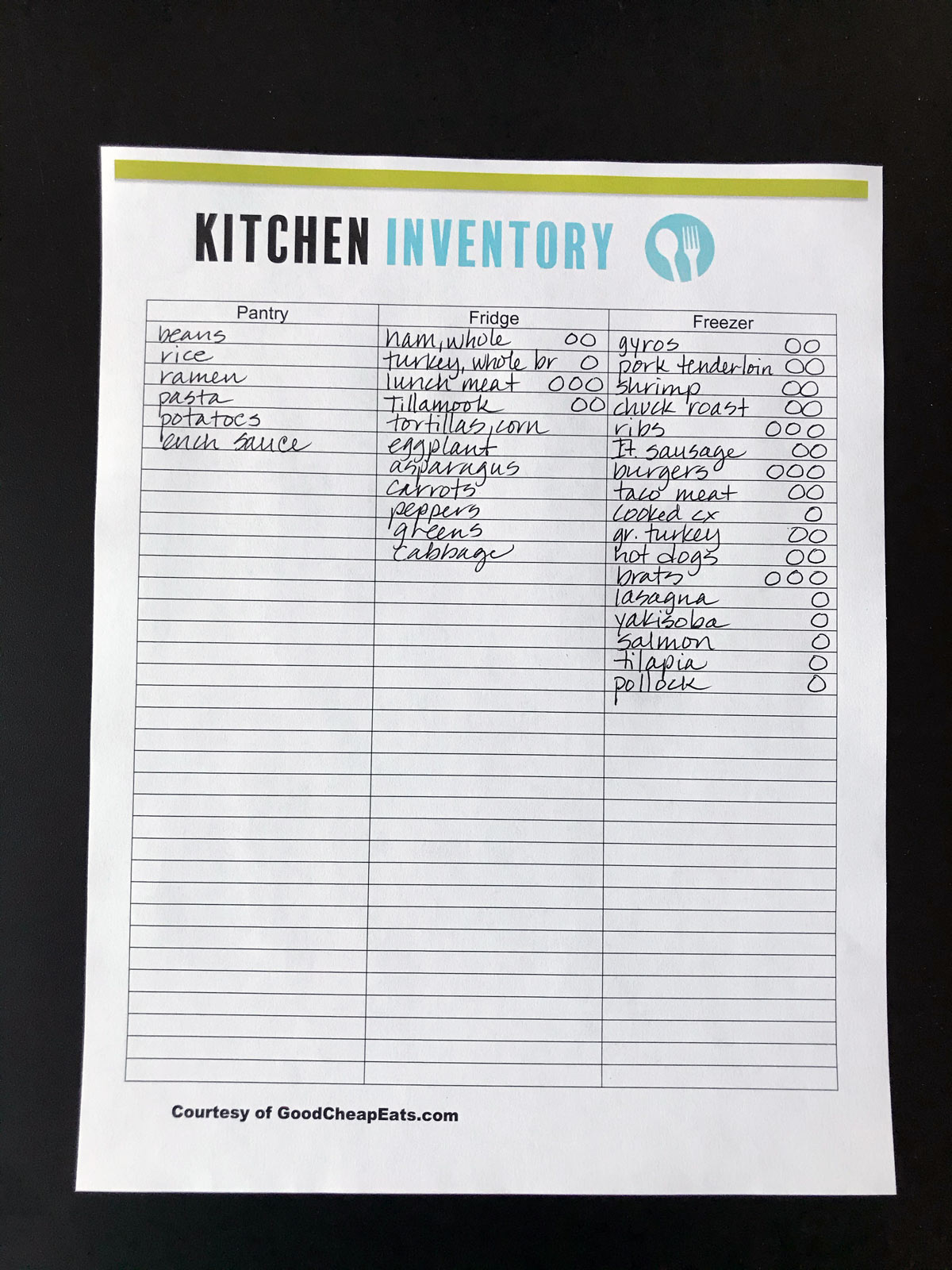
How to Meal Plan on a Budget
1. Use what you have.
All too often, we think we need to go shopping, when really all we need to do is shop our own kitchens. Using what you already have saves you the money you’d spend if you went shopping for more as well as reduces waste if you keep things stashed too long.
Take a real close look at what you have in the cupboards, fridge, and freezer. I bet there’s more there than you think. That’s usually the case. Most of us tend to overbuy.
Save some money this week by planning meals around what you already have. This is the first and easiest way to meal plan on a budget.
If you don’t have a great way to keep track of your supplies, download this inventory sheet from our free resource library to make it easy. That will help you know what you have to work with.
Not sure what to make for dinner? Check out some of these cheap and easy meal recipes using common proteins:
Whenever possible, plan meals that are easy so that you’ll avoid getting eating out or grabbing take-out. This might be a No Cook Dinner or a one pot or slow cooker recipe.
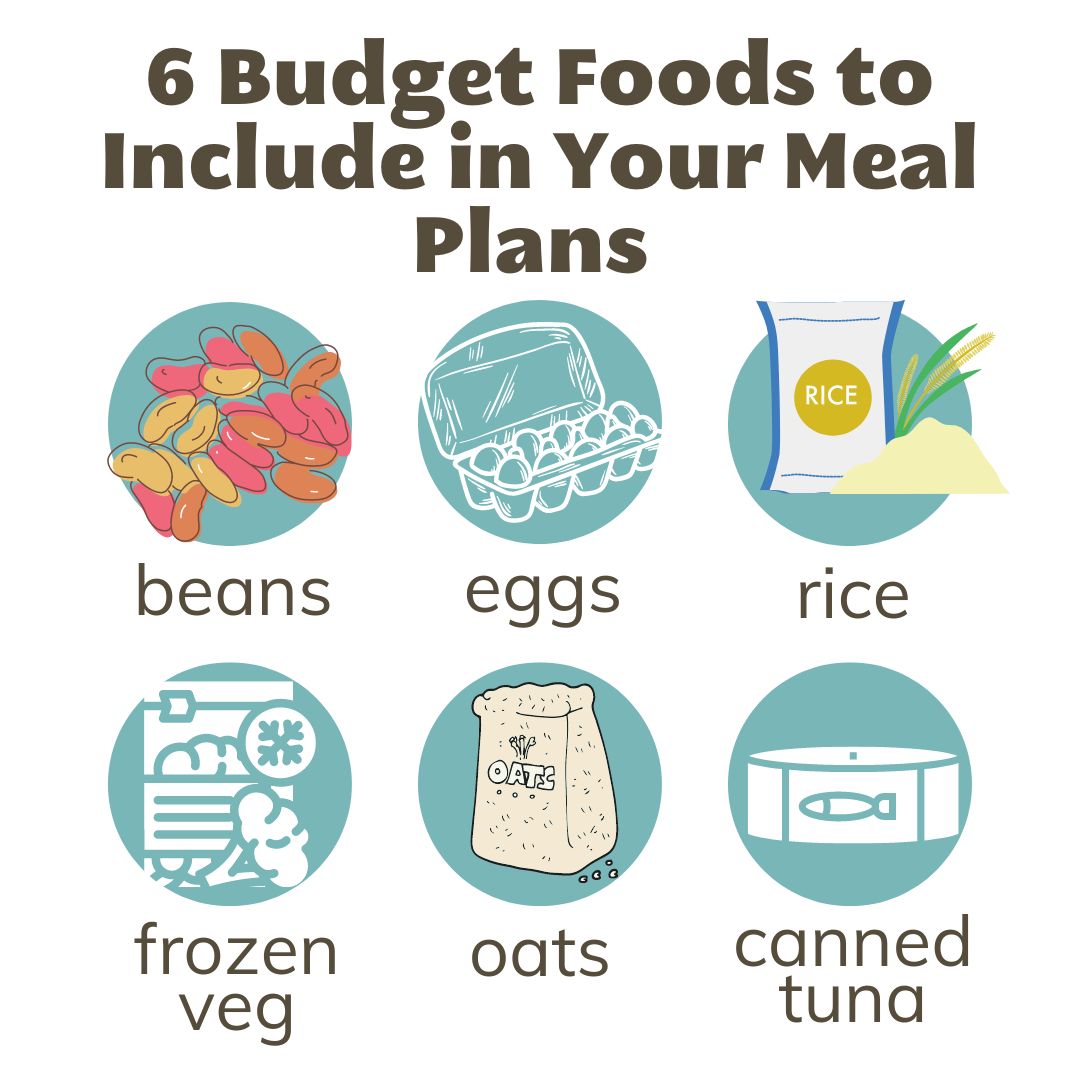
2. Plan meals based on naturally frugal ingredients.
There are some common, budget grocery items that are always a reasonable price: beans, rice, oats, frozen veg, canned tuna, and eggs are good basics to focus on.
These are incredibly versatile and will be lower priced almost all the time, making them great to add to your budget meal plan.
Ground beef and pork tend to be cheaper proteins, but this will vary based on location and market conditions.
3. Check the sales and clearance.
Once you’ve checked your stock on hand and generated a list of ideas of meals to make from those ingredients and generally frugal items, it’s time to shop for what you need to fill in the blanks. That means, checking what “loss leaders” are available at your local grocers.
A loss leader is an item that the store offers at a rock bottom price, one that they will probably take a loss on, but it’s worth it to them to have you come through the door.
A great example is the boneless, skinless chicken breast on sale for $2.49/pound. It doesn’t really get lower than that. Buy some for this week but add a few extra packages to the cart so that you can freeze it for future weeks.
You’ll be able to plan budget meals around cheap ingredients now and later.
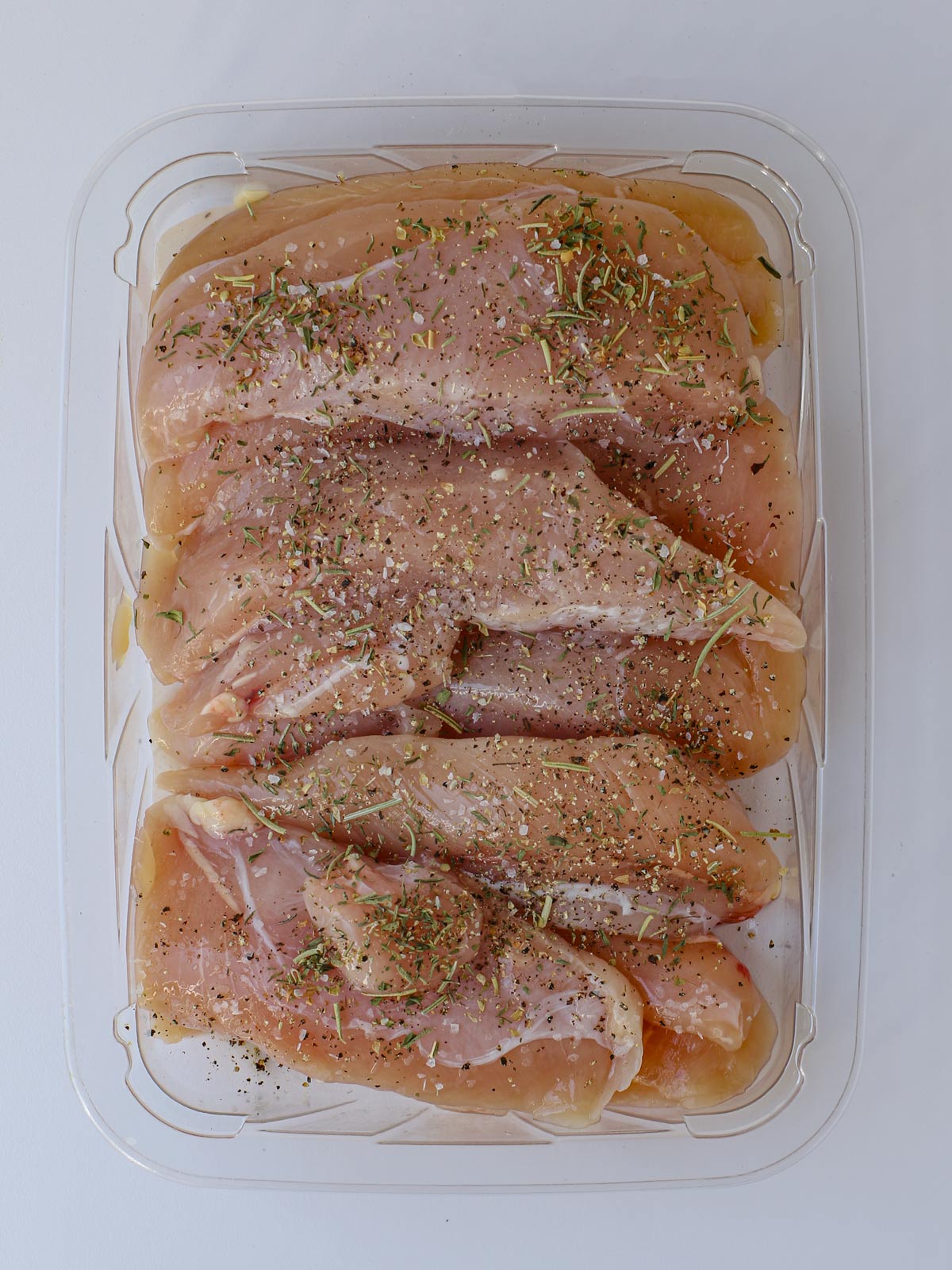
4. Prioritize your spending.
To meal plan on a budget that you mean to stick to, you need to prioritize your grocery spending. You might not be able to buy everything you want this week.
Keep a running list of “must haves” and “would likes”. Knowing your grocery staples will be helpful here.
The “must haves” will be your priorities. Buy the “would likes” only as you have funds available.
You’d be surprised what you can do without. Once I started making recipes without every ingredient called for, I realized that we didn’t really miss those black olives or chopped green chiles.
Buy the things that pack the biggest punch to your meal planning and learn to make your favorite pantry staples from scratch so that you rarely have to do without anyway!
5. Buy ahead.
If there is grocery money left after purchasing your “must haves”, think about stocking up on groceries, such as those loss leaders that you know you will use in the coming weeks.
You’re much better off buying that chicken at $2.49/lb than paying the full pop of $7 or more!
Check the clearance section for items that are being discontinued or marked down to move quickly. You just might find some “would likes” at great prices. Christmas clearance is amazing, but you’ll find deals all year long.
Buy as much as you can store and afford of the things you know you will use. This will help you stretch your funds just a little farther.
Once you learn how to meal plan on a budget, you’ll find that it’s second nature to you. Your gaze will shift so that you naturally prioritize where to spend your grocery budget. You’ll discover budget recipes you love as well as learn to make expensive take-out items yourself for less.
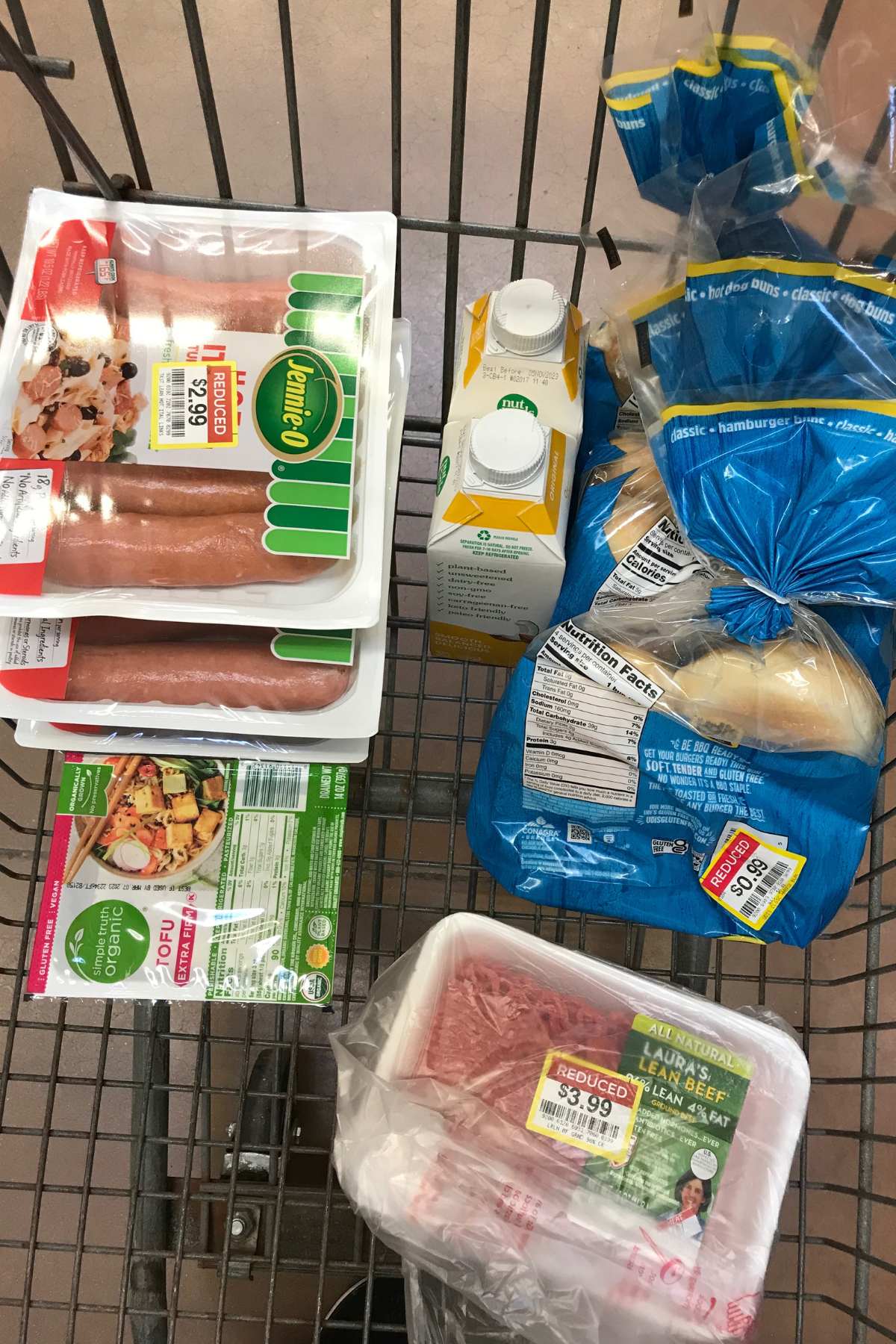
FAQs
The cheapest meals are those made from ingredients you already have on hand. After that, focus on regularly frugal ingredients, such as beans, eggs, rice, frozen veg, oats, and canned tuna.
Identify how much money per month you can spend on food. Setting a food budget is a great start. Then, divide that amount into four, allowing yourself no more than that amount to spend on groceries as well as meals out.
A meal plan can save you money if it’s taking into account the food you already have at home, generally frugal ingredients, and sales as well as avoiding food waste.
The same rules apply to a healthy meal plan on a budget. Sourcing, that is determining the best grocery store for the things you buy will help you keep to your budget as well as your food goals.
Free Weekly Meal Planner
Need some help organizing your meal plan on a budget? Be sure to visit our free resource library to download worksheets to help you inventory and meal plan on a budget.
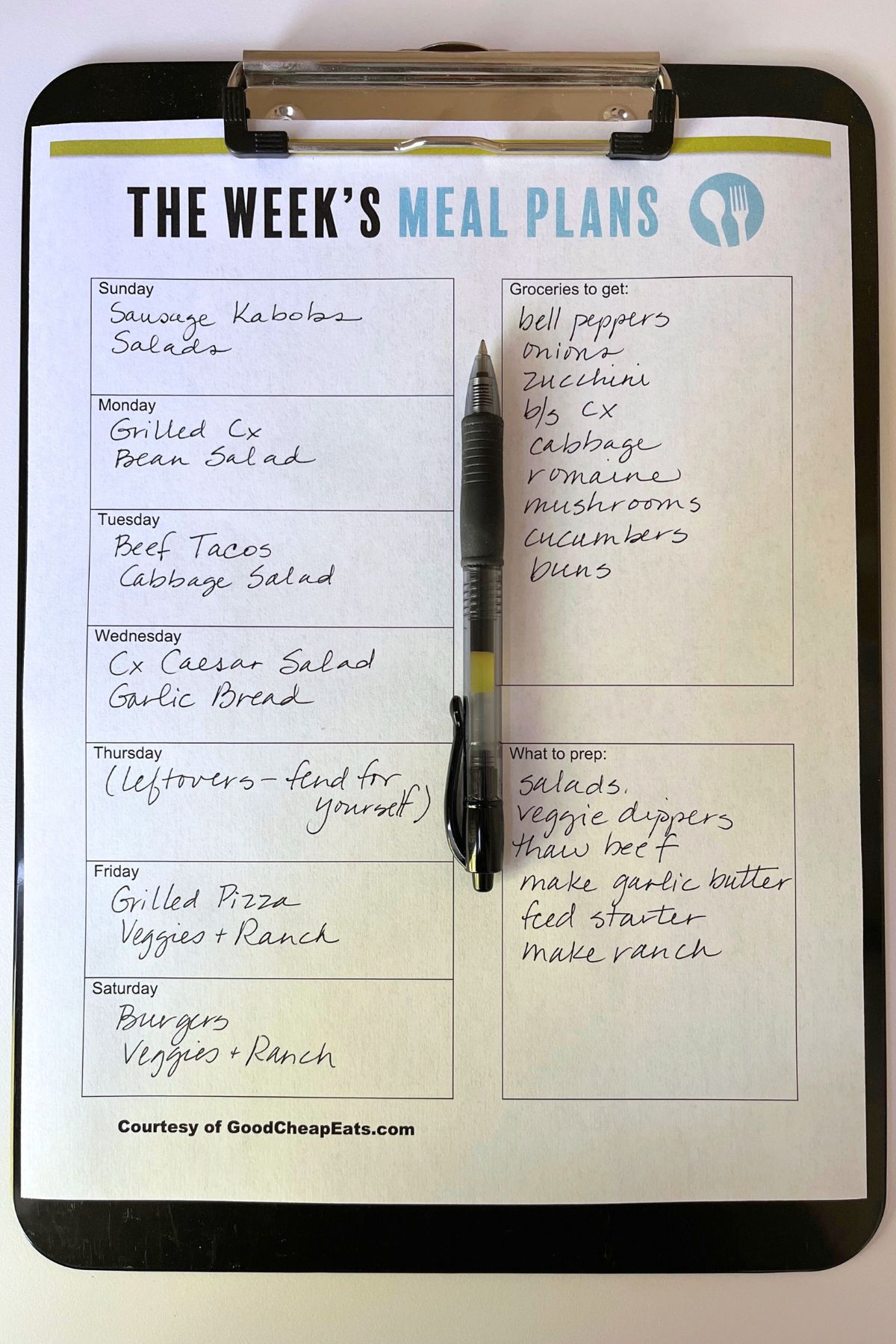
A Sample Meal Plan on a Budget
Our family currently has a grocery budget of $1400/month to feed seven people, aged 14 to 60.
I’ve shopped my kitchen and based meals on what we have. I will double-check what I have against the grocery list below to guide my Saturday grocery shopping.
Feel free to copy this! Just click generate shopping list, and you’re good to go. Each recipe I’m using this week is linked as well.
* As of June 2023, this plan is updated on a weekly basis, so check back next week to see what’s on the menu.
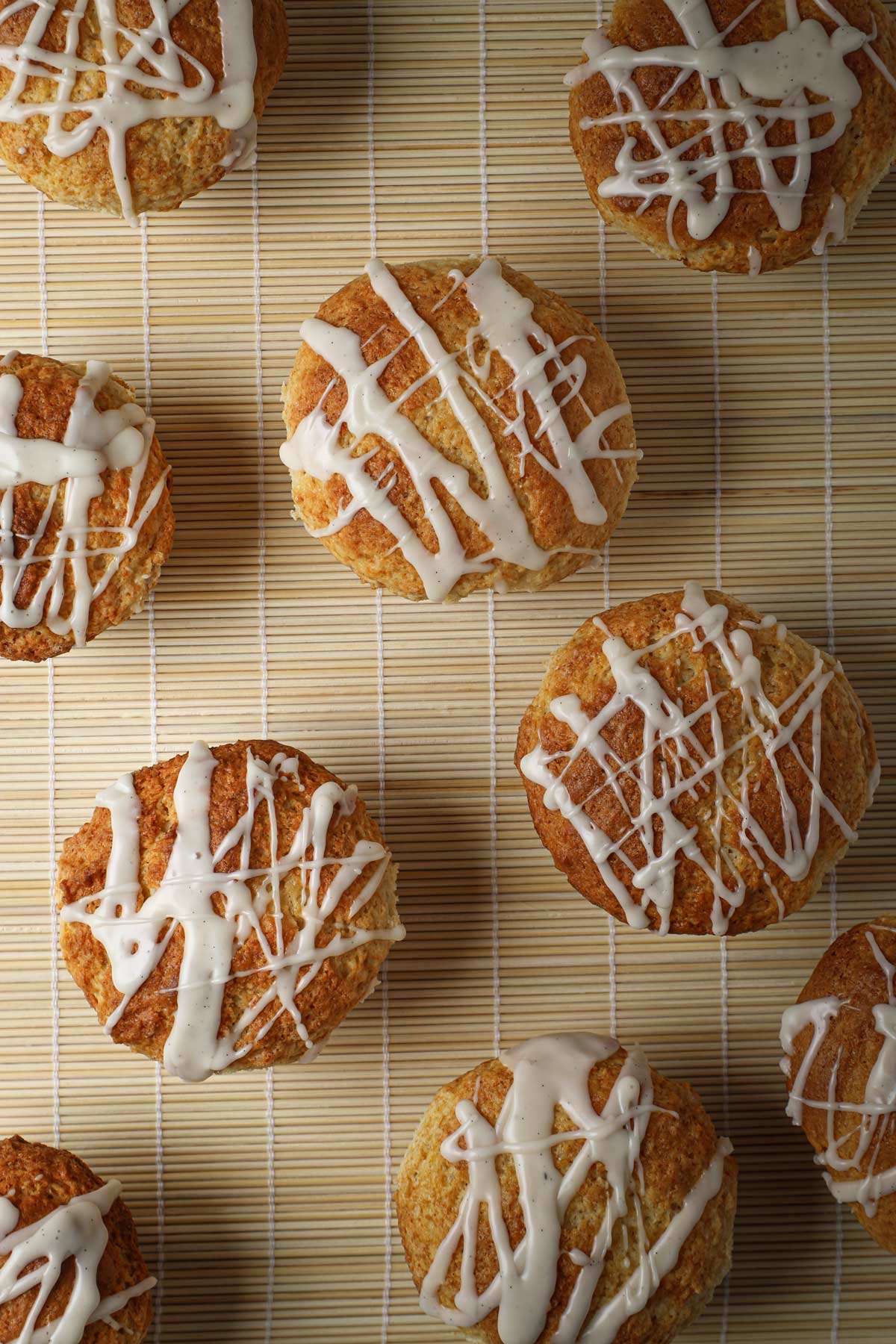
More Budget Strategies
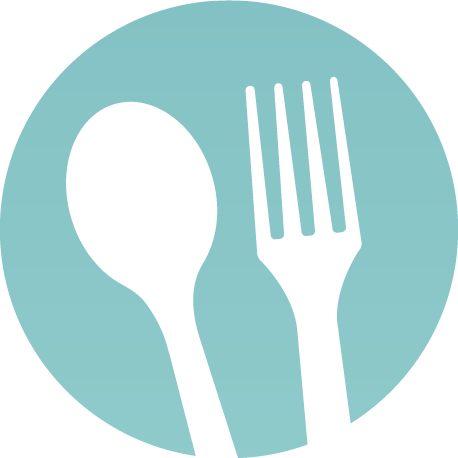
Tell us what you think!
We love to hear your experiences with Good Cheap Eats. Click the STARS on the recipe card or leave a STARRED comment to let us know what you think of the recipe.
This post was originally published on January 19, 2014. It has been updated for content and clarity.


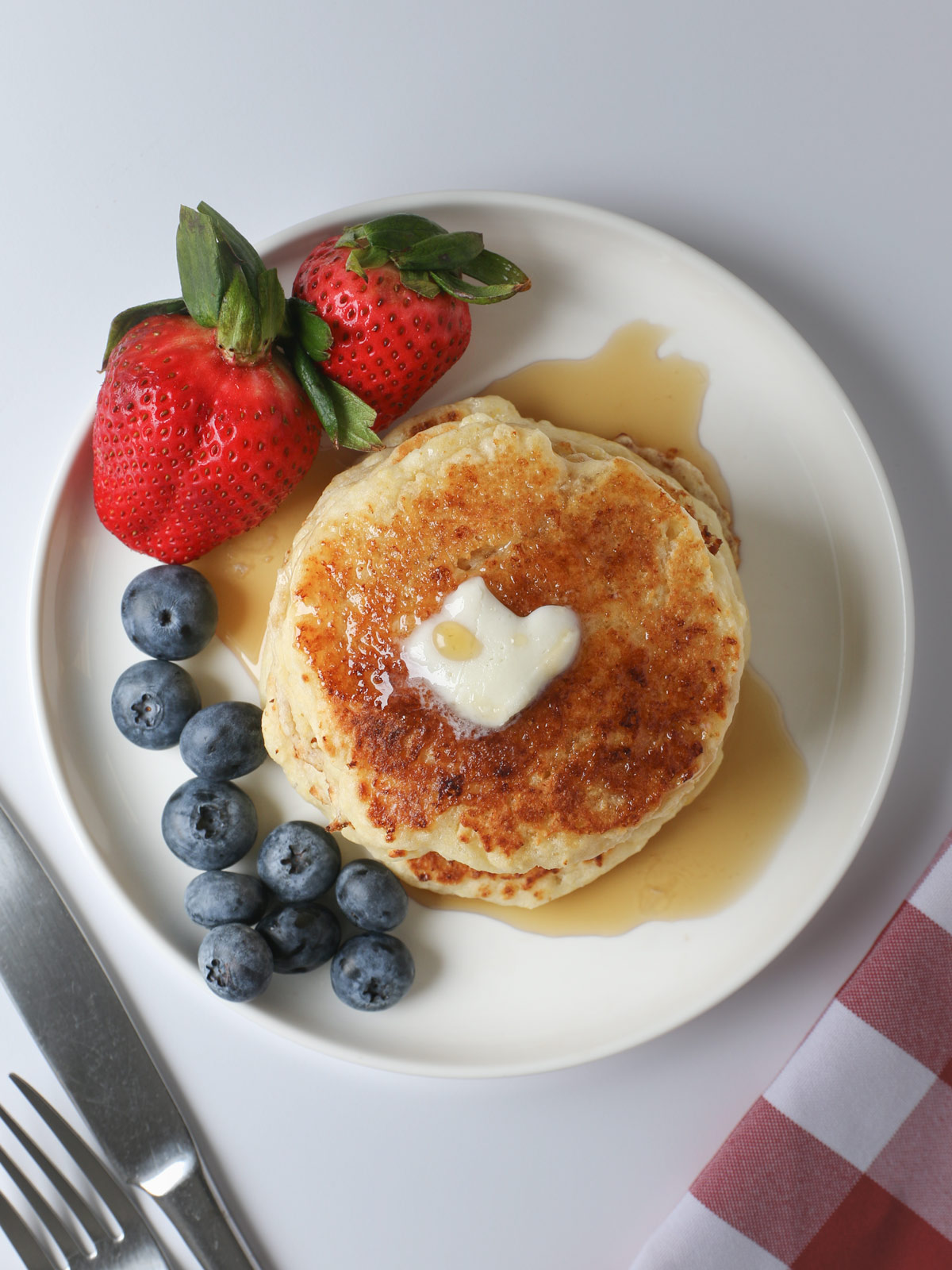
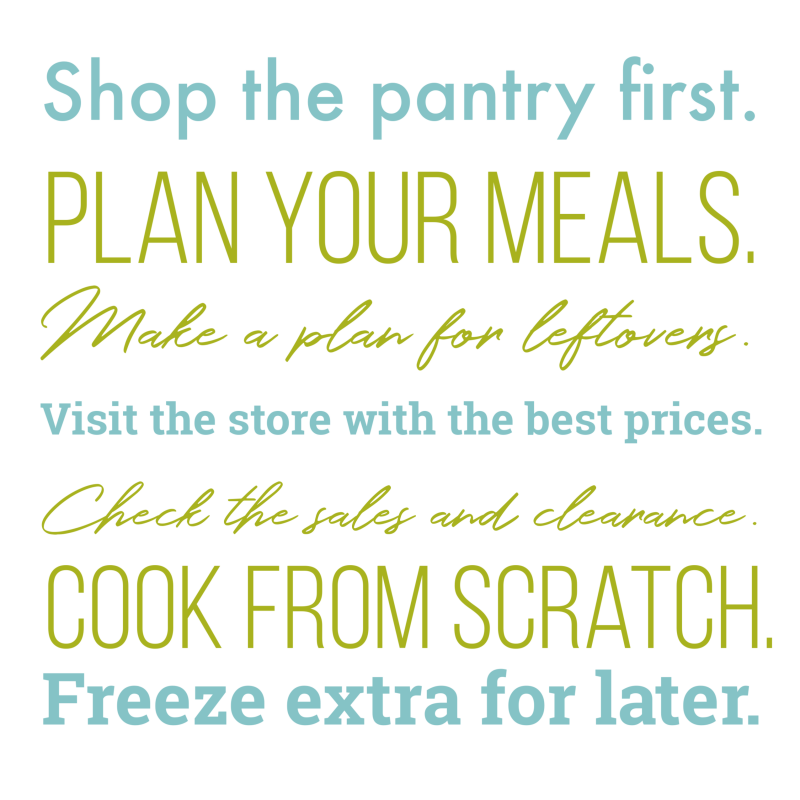
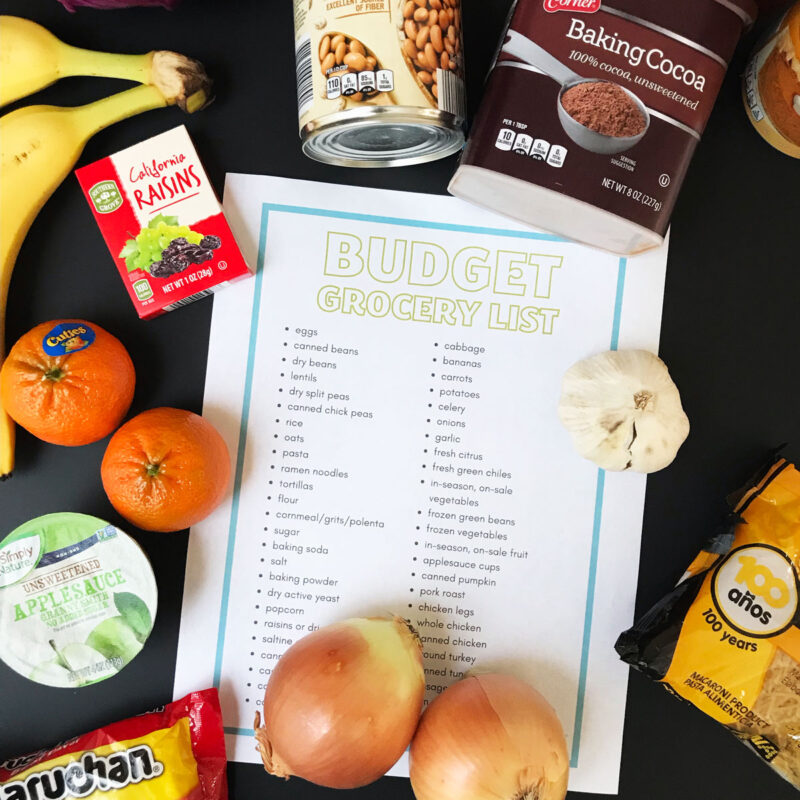
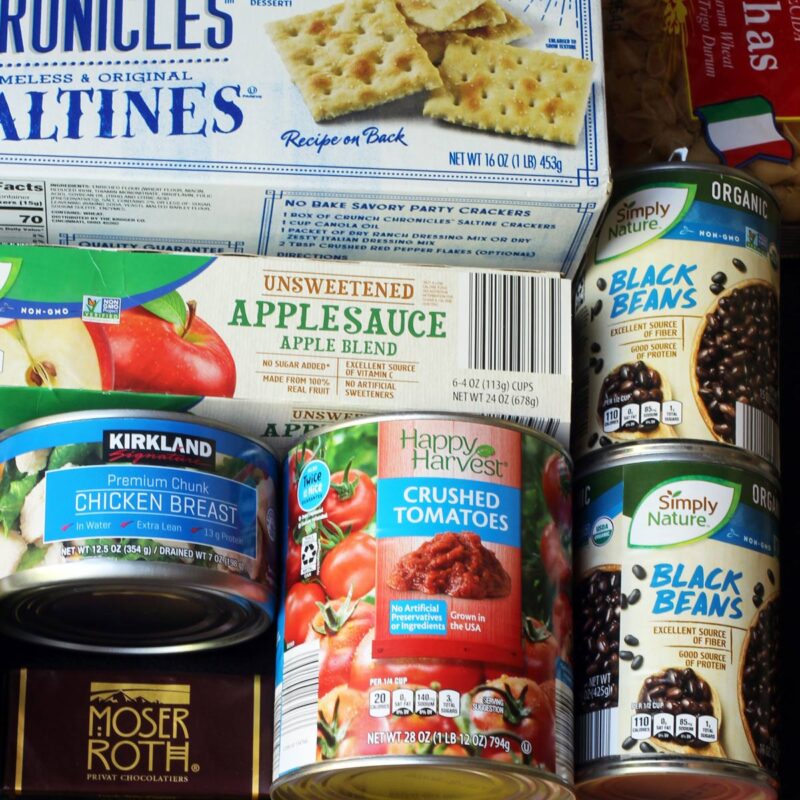
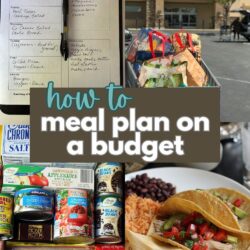
Pat Cote
I believe that shopping the pantry first is the most important. For me–if I already have food I should use some of it up before buying more. Coming off this season of the pandemic and not wanting to run out of needs and the fact that my husband brings leftovers home from catering July has been deemed Pantry Challenge time for me. Our only needs are fresh produce–everything else I need is already here-i hope.
Jessica Fisher
We’re going to do a PC, too. Just haven’t decided what allowance I’ll set for myself to buy deals. Hmmm….
Janet
Stockpile the holiday sales. Green beans, evaporated milk, cranberry sauce, stuffing, and baking supplies are ALWAYS on sale between the middle of November and the first of January. Knowing this, I try to save a little back in August, September and October so I can stock up when items are on sale. More often than not I have a coupon as well. Last year our neighborhood grocery had a flash sale last and I was able to purchase a dozen cans each of green beans, cranberry sauce and evaporated milk for 10 cents a can.
Jessica Fisher
Yes! I think I get MORE excited about shopping AFTER Thanksgiving and Christmas than I do before!
Susan L. @ Full Happy Muffin and Mama
I believe in stockpiling ingredients that can be used in a wide range of ways. I also cruise the aisles if I’m on my own and don’t have to worry about a three-year-old having a temper tantrum for clearance items (of items that I use frequently), marked down meat, and produce (Our local Brookshire’s marks down lettuce bags to 99 cents a container–all usable). I wish we still had the bread thrift store, but when Hostess went belly-up, so went the Hostess bread store. I try to keep two-three weeks of food on hand at any time, just in case. That way, only things like milk and fresh produce have to be replenished. Over Thanksgiving weekend when the flu hit, there was no grocery shopping for that week. We ate from the stockpile.
Jessica Fisher
I love having a stockpile. It makes it so nice to just shop the cupboards.
Sally C
I love this! I wrote the steps down and put them in my kitchen.
May I add one sub-step to the inventory? In addition to making an inventory of available food, make an inventory of available funds as well. Sometimes right before payday, I can see that I have extra grocery funds and will elect to buy more meat or stock up items. If I’m skidding in to payday with just $6.00 remaining, I’ll pick up basic produce and dairy to get me through the next few days. I need to do food inventory about every 10 days.
There is such power in knowing what you have! Yesterday I determined the only available meat I had was ham so it was going to have to be potato soup for dinner. Tonight is ham and cheese gyoza. I was motivated to do a search for ham recipes only after I made up my mind not to give in on my pantry challenge until my end date.
Jessica Fisher
Yes! Tracking your spending is essential. I use the GoodBudget app that lets me track different digital envelopes for our spending. I know with a click how much is left.
CeCee
I think that a price book is the most important part of budget foods. I have a certain dollar amount that I will spend on any given product max and a dollar amount that is rock bottom stock up price. Example; bone in skin on chicken. The most I will spend is 1.99 lb the stickup price is 1.39lb or less. This helps me keep the freezer full for a smaller amount of money.
Jessica Fisher
How do you track your price book? Mine’s in my head….
CeCee
Mine has evolved over time. My mom always had one in her head so that’s how I did mine. Until I moved to Reno from Louisiana. Then I had to learn things all over. Shrimp can get down to 1.99lb in La in Reno 7.99lb is a deal. Produce is soooo much cheaper here than there. So I had an actual “book”. Now I have a 4×6 index card with items that I buy semi-frequently, but might forget the price of. I break things like peanut butter down to the per ounce price
Jessica Fisher
The index card is a great idea!
Stephanie M.
I’m learning to be a better budget meal planner by having participated in the most recent pantry and freezer challenge. Now instead of running out to the store and making an impulse purchase based on what I have decided I feel like eating on any given day, the night before I check my freezer to see what I have and then go to my pantry to see what will go with it and if I have what I need to make that particular meal. If I can get away with making that meal with what I have, I do it; if I don’t I might just prepare the meat from the freezer a different way or just omit something from the recipe if possible. As far as loss leaders, every morning, my local grocery store has a few shopping carts set up with bread and rolls that are a day past their sell date. I frequently go through it at find something I can use. Yesterday, I purchased a 2-pack of Italian bread for 99 cents. I froze it for later next week to make garlic bread with it. The bread always tastes fine; when you buy it fresh and at top price, it sits in your house for a few days anyway. When I buy from that cart, and it is often, I usually freeze it in portions and use what I need when I want it. I also look out for “manager’s specials” on meat. If it’s something I’m not planning on cooking that day, I freeze that until I need it.
Jessica Fisher
I’m so thrilled that the pantry challenge was a good experience for you!
I, too, love the day old bread cart and the manager’s specials. It’s like Christmas. Only not.
Stephanie M.
Jessica, you have no idea how much you’ve motivated me and to see so many other ladies participating was also motivating. This was a GREAT experience for me and I can’t wait to do it again in July. Today I went into my freezer and took an inventory; I’m guessing that I have about enough in there to make another 25 meals or so and that doesn’t necessarily mean 25 days because some of those meals will provide leftovers. But I am extremely committed to following this through till the end. I am truly having a great time with this and saving some cash too!
Jessica Fisher
Wow! I’m so excited for you. 🙂
Molly
I needed this today. My husband and I are planning a move soon that will help his career path immensely, but means I will leave my very well-paying job to become a stay at home wife. I especially like the concept of prioritizing must haves and would likes. Must have fruits, veggies, baking basics, and beans. Would like to have canned beans instead of dried for convenience, granola bars, and yummy things that catch my eye.
Jessica Fisher
I am reading a health book and just read about how much better dried beans are since you avoid the BPA. So, see the cheaper kind is better for you. 😉